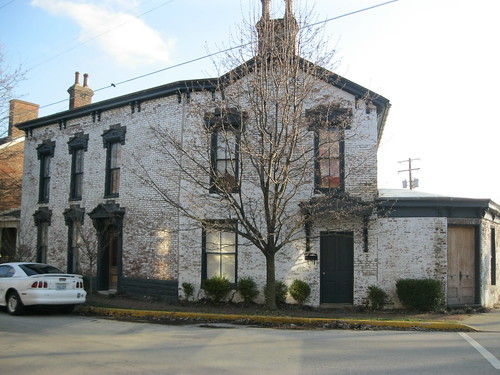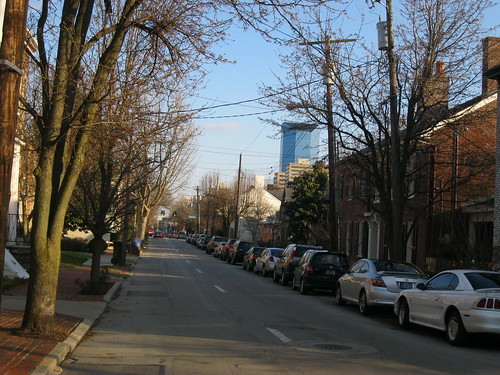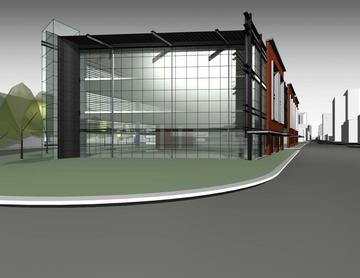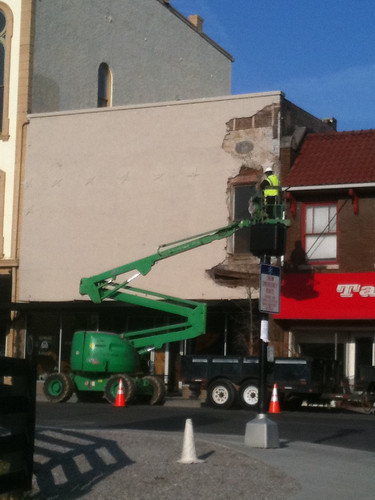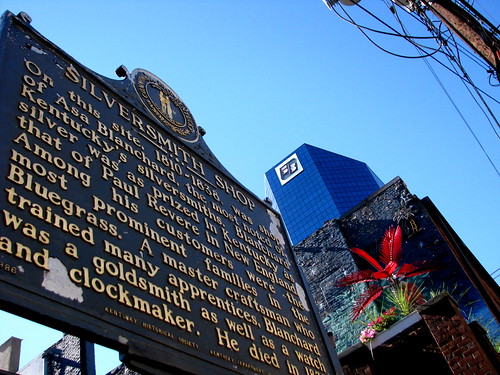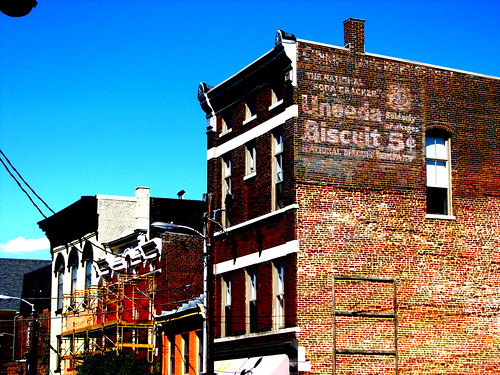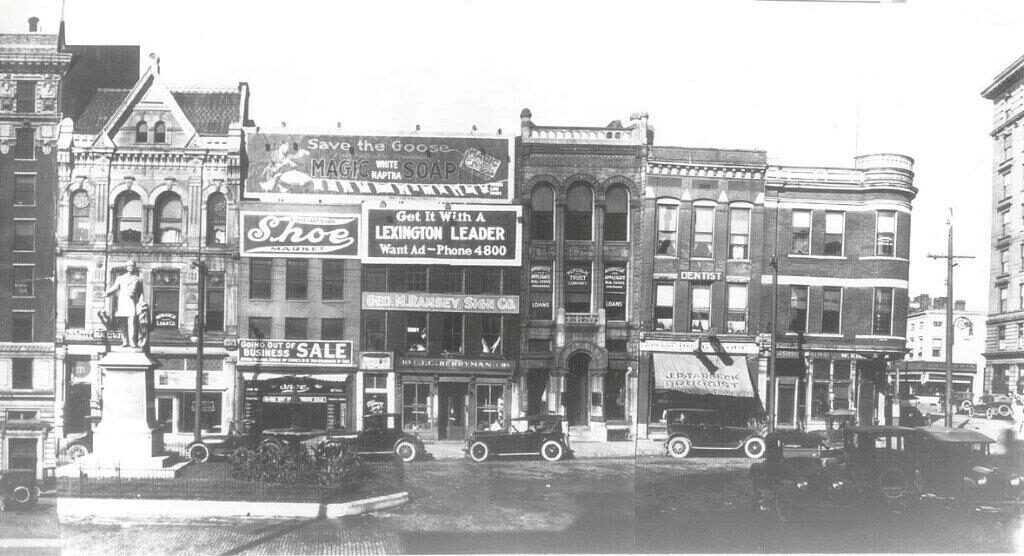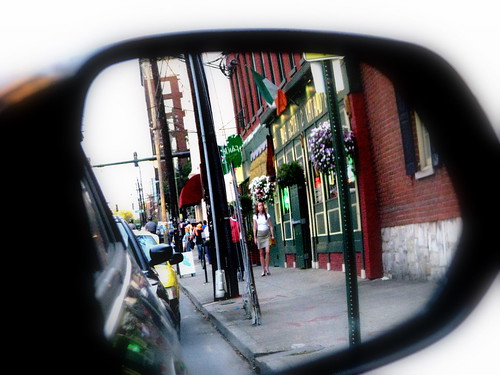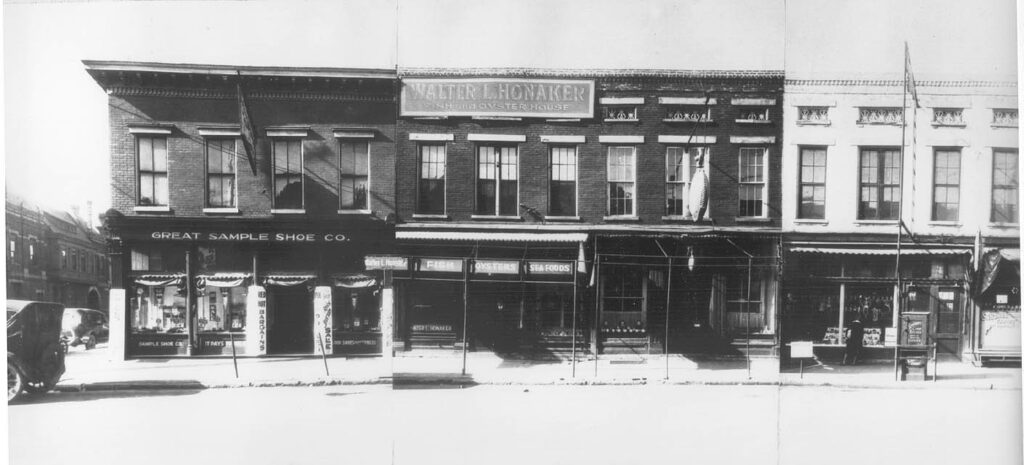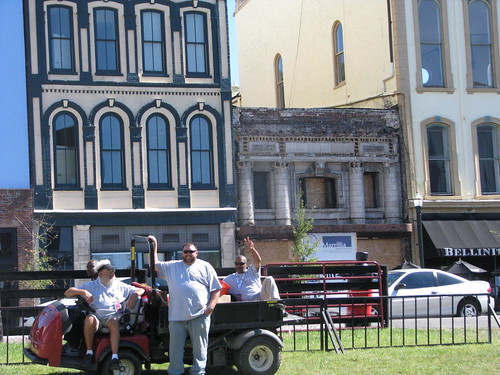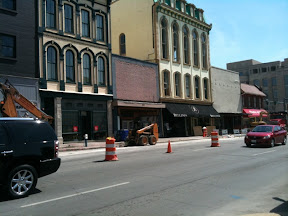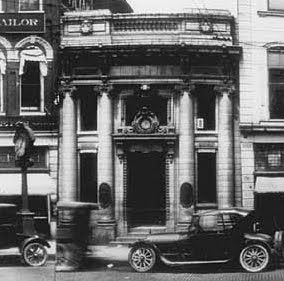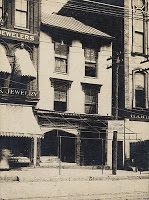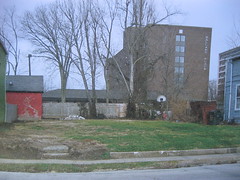 |
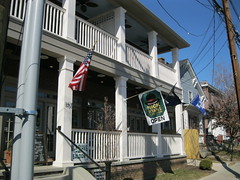 |
|
| Empty Lot on Jefferson Street (before) | Nick Ryan’s Saloon (after) |
The dining scene on Jefferson Street in downtown Lexington has been rapidly changing over the past couple years. Most of the changes have been positive (a sad note was when the Cuppa tea cafe closed earlier this month – obituary by thebravetart). One of the most positive improvements to this part of the Western Suburb is the construction and opening of Nick Ryan’s Saloon (where they proudly display the history of this great name).
As you can see from the pictures above, just a short while ago an empty lot sat on Jefferson Street across from the Harrison Elementary playground. A quick glance at the building wouldn’t reveal a building completed in 2010 — it looks like a much older building that has been well taken care of. The two story brick is patterned after the nearby Green Lantern with its long porches across the front and French doors which provide access to the open dining area. [*] Plans to renovate the neighboring building and expand were altered when it was determined that the structure couldn’t be saved; Nick Ryan’s will expand in yet another neo-historic building. [*]
But I’m not here to do a restaurant review (disclosure: I love the place). I’m here to appreciate how the restaurant embraces its pseudo-history. Recognizing that this is not a continuation of the old, Nick Ryan’s is an example of an excellent infill project for the primarily-residential neighborhoods that surround downtown. Aside from building a terrific building that is appropriate for the area, the owners selected a name with a Lexington history.
Nick Ryan’s Saloon existed before, circa 1905 on North Mill Street (at 120 North Mill, to be exact). Nick Ryan’s honors the tradition with historic photographs in the restaurant and on the website, though a love history is the only connection between the now and then. Of course, the real Nick Ryan who opened the original saloon in 1905 grew up in the Western Suburb where the new namesake saloon now resides. All saloons shuttered when prohibition began in 1920, but the Ryan’s survived with their other business interests (clothing and restaurants).


